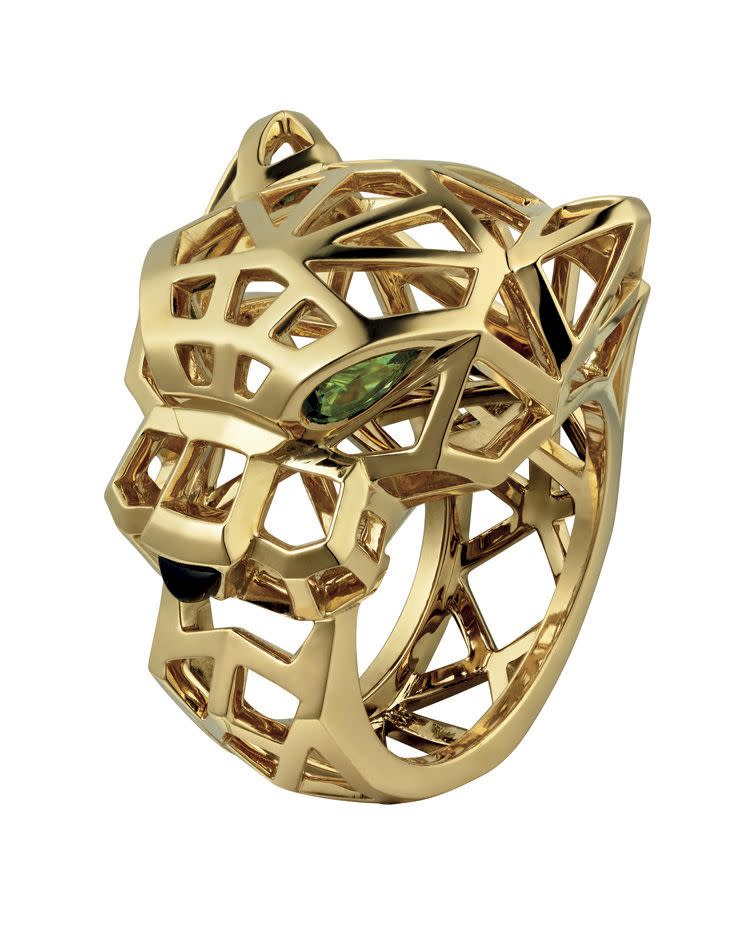Why Everyone from Royals to Rap Legends Covet Cartier’s Panthère

When the Duchess of Windsor wore Cartier’s very first three-dimensional jeweled Panthère brooch in 1948, it was considered a daring statement. “Up until the '40s, only courtesans or actresses wore these types of animals; not women of real society,” explains Pierre Rainero, Cartier’s longtime director of image, style, and patrimony. The Duchess, who clearly enjoyed a scandal, was so taken with the seductive cat (and the attention that came with it) that she later acquired six more Panthère jewels.
The shrewd Duchess of Windsor knew that jewelry was the best form of self-expression and a great way to make a public statement. Other style icons of the era who followed her lead and embraced the feline jewel included Barbara Hutton, María Félix, Daisy Fellowes, and Princess Nina Aga Khan. In those post-war years, the captivating cats came to symbolize the freedom of expression that women gained as they cast aside the social restrictions of the past and moved into a liberating new era.

“The Panthère is a sign of independence,” says Rainero. “It’s a paradox: It’s precious and it's feminine, but at the same time it’s a wild animal and it can be frightening.”
What makes Cartier’s Panthère unique among signature jewels is its appeal to generations of women, and men, too. Music legend Jay-Z famously wore an enormous Panthère ring covered in diamonds to the Grammy Awards a few years ago; Elton John also has a large ring, and celebrity stylist Law Roach recently confessed that his dream piece of jewelry is a Panthère ring. There is perhaps no other signature statement jewel that has such staying power and broad appeal.

The Panthère design is just as captivating today as it was when the first onyx and diamond spots appeared on a Cartier wristwatch in 1914. It was the imaginative and daring Jeanne Toussiant, Cartier’s director of jewelry from 1933-1970, who immortalized the feline as Cartier’s signature pet. The audacious spirit of the panther reflected Toussaint’s own character: a well-known figure in Paris society, she broke with social norms with her eccentric style, including donning pajamas and a full-length tiger-fur coat during the day. Louis Cartier fondly gave her the nickname “Le Panthère.”
But the cat’s big success also frustrated her creative spirit. “Jeanne Toussaint was upset by the success of panther because the panther erased everything else—the birds, the turtles, and the insects,” explains Rainero. “She said, ‘Everyone is only thinking of the panther, the panther, the panther.’” That illustrates just how popular Cartier’s big cats came to be.

Cartier has kept the allure of the panther alive with a variety of creative new interpretations every year, from boldly carved cats elegantly pavéd in diamonds and sapphires, to panthers slinking around the neck on a sensuous gold chain or wrapped around a timepiece. And they almost always have piercing emerald or sapphire eyes.

The Panthère continues to captivate, and everything is coming up cats this fall at Cartier’s boutiques with the house’s striking Panthère de Cartier Graphique collection featuring modern, minimalist styles and lifelike high jewelry pieces made with geometric panther spots of precious gems that are hand-carved onto the piece to achieve a lifelike character. There are also new Panthère watches, eyewear, accessories, and fragrances.
During a time when people are seeking symbolism and strength, Rainero believes the Panthère is especially relevant. “You aren’t going for a safe thing when you buy a Panthère or wear a Cartier Panthère,” he says. But it stands for something: “It represents a legacy, an element of permanence, and it projects a level of strength.” We could use talisman like the Panthère these days.
You Might Also Like
